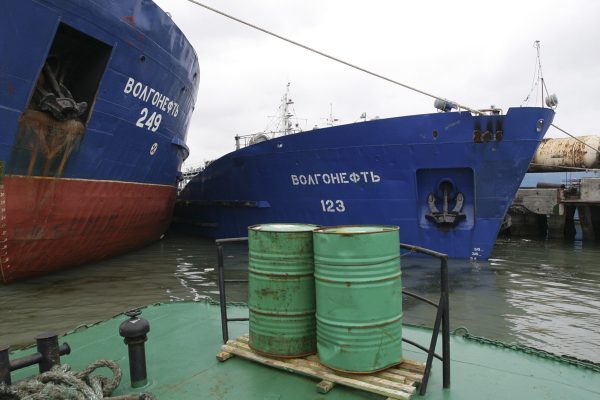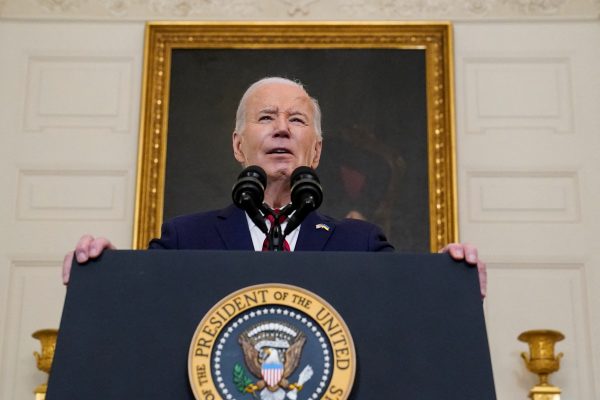Predictably, the Black Sea Grain Initiative, facilitated by the UN and Turkey, collapsed after Russian obstruction and its ultimate destruction by the Kremlin in July, followed by a renewed drone and missile campaign against Ukrainian port infrastructure. Russia struck the historic heart of Odesa too.
Yet Ukraine pushed back forcefully at Russia’s attempt to resume its blockade and opened a unilateral maritime corridor that hugged the shore all the way to NATO territory.
While this corridor started with mostly outward traffic, it has substantially increased shipment volumes, reaching close to 20 million tons of agricultural and non-agricultural cargoes in its first six months, thus nearing pre-war levels.
It is on course to surpass the numbers achieved under the grain deal, which saw some 30 million tons transported annually, but which also gave Russia de facto boycott powers.
How did this happen?
Ukraine organized a highly effective military campaign against Russian targets in Crimea and the Black Sea Fleet. This combined Ukrainian audacity with a mix of domestic and Western capabilities, including drones and long-range Anglo-French cruise missiles.
This sustained campaign, a continuation of Ukraine’s 2022 operations, which saw the sinking of the flagship Moskva and recovery of Snake Island in 2022, intensified last summer with several successful strikes.
It led to the destruction of the Black Sea Fleet HQ in Sevastopol as senior commanders held a planning meeting and some 20% of the fleet. In early August, its drones traveled 800km (500 miles) to hit a Russian ship near Novorossiysk, in the Northeast Black Sea, where a growing number of Russian vessels were seeking safety. Kyiv said Russian ports were considered a military threat, potentially disrupting its exports too.
The result is that Russian naval vessels are no longer safe, as the sinking of the missile corvette Ivanovets on January 31 underlined. Thus the Kremlin’s grip on Ukraine and the Black Sea’s international waters has loosened.
While much of the international community stood idle in the face of Russian threats against international navigation and food security, Kyiv called the Kremlin’s bluff and restored order. At the same time, the improvement of air defense in the region has seen Ukraine bringing down Russian aircraft in the South — including three Su-34 bombers in a missile ambush — a deterrent to Moscow’s aerial campaigns.
As a result, while Ukraine’s land counteroffensive faltered and in the fall, it now holds the initiative in the Northern Black Sea and can claim operational success in sea warfare.
There are key lessons to be drawn from this.
Most importantly, only the steady application of enhanced military pressure, not diplomacy, will eventually deter and contain the Russian threat. With Vladimir Putin, only force will work. Any diplomatic activity should spring from a military balance that benefits Ukraine more than it does Russia.
Next, hopes the grain deal could be a harbinger of broader peace arrangements were misplaced. Russia was not, is not, and will not be interested in deals that help sustain Ukraine’s export economy and external assistance, two of its crucial lifelines.
The Kremlin wants to bomb Ukraine into submission, destroying its economy and all the civilian infrastructure it can, so these lifelines are priority targets. Hence Moscow’s cynical bombing of Ukrainian ports while it made profits in the markets, often with stolen grain, in the worst tradition of parasitic imperialism.
The defunct deal illustrates what would become of any “Minsk III” – an idea once again suggested by the same diplomats and pundits who led us to all-out war in the first place- or a ceasefire arrangement. As with Minsk II in February 2022, Russia would declare it dead on whatever pretext and resume full-scale aggression once it rearmed.
Putin is fixated on total military victory, not real peace. This is even more the case now that some politicians, especially in the US, are vacillating in their support and encouraging his belief that he will win over time.
Ukraine’s successes in the Northwest Black Sea are not yet strategic. A naval campaign is no substitute for a land offensive.
The Russian Black Sea fleet, though diminished, remains a formidable threat, and Russia continues its bombing campaigns against Ukrainian ports and infrastructure.
But enabling Ukraine to build on its naval campaign means a greater threat to Russia’s key support facilities supplying its forces in the occupied South.
For this, Ukraine needs more long-range missiles and drones, and more joint defense production projects supported by Western countries.
Such assistance must go hand-in-hand with support for Ukraine’s strikes against Russia’s deep rear, including military airfields from which it bombs Ukraine daily.
Lastly, there is space for more audacious initiatives spearheaded by coalitions of Western countries — such as extending the use of air defense against unmanned Russian drones and missiles hitting those areas of Ukraine that border EU and NATO territory.
As has been the case from the beginning of Russia’s full-scale invasion, and will be the case as long as Putin and his regime exist, there is only one way forward: arming Ukraine to the teeth with all the conventional weapons it needs to prevail.
Borja Lasheras is a Non-resident Senior Fellow with the Transatlantic Defense and Security program at the Center for European Policy Analysis (CEPA). He is a Special Adviser for Ukraine to the European External Action Service (EEAS). He served in the Spanish Presidency of the Government from 2018—2021 and was ultimately Senior Foreign Policy Advisor.
Europe’s Edge is CEPA’s online journal covering critical topics on the foreign policy docket across Europe and North America. All opinions are those of the author and do not necessarily represent the position or views of the institutions they represent or the Center for European Policy Analysis.





